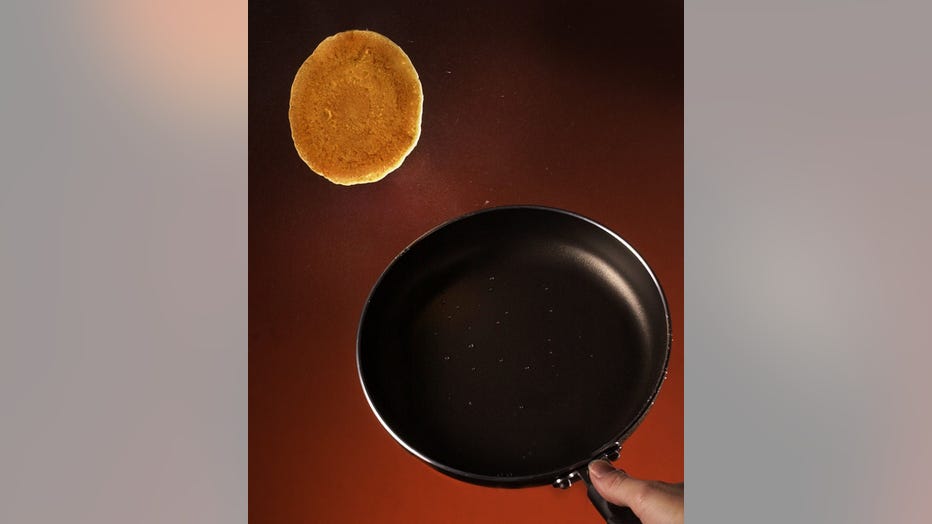What is 'Teflon flu'? Illnesses linked to nonstick pans on the rise
Fumes from nonstick pans can cause illness if theyre heated at too high of a temperature (Photo by: Newscast/Universal Images Group via Getty Images)
Cases of polymer fume fever, also known as "Teflon flu" because the illness is linked to fumes from nonstick pans, are on the rise.
Poison centers across the United States recorded 267 suspected cases of polymer fume fever in 2023, the highest number of cases since 2000, according to America’s Poison Centers. In all, poison centers have recorded more than 3,600 suspected cases of the illness since they started tracking them more than two decades ago.
Dr. Kait Brown, clinical managing director for America’s Poison Centers, said not all cases of polymer fume fever are linked to at-home use of nonstick pans. Some cases can stem from exposure at work or other sources.
RELATED: Cinnamon recalled after testing reveals elevated lead contamination, FDA says
What is ‘Teflon flu’?
Polymer fume fever, or "Teflon flu," is a flu-like illness caused by inhaling the thermal degradation byproducts of fluorocarbons, according to the National Institutes of Health.
RELATED: FDA pushes back deadline again to ban formaldehyde in hair products
Overheating polytetrafluoroethylene (PTFE) coated nonstick (Teflon) cookware is the most common form of exposure, but improper ventilation at work or poor hand hygiene after handling the raw material are also risk factors for the illness, the NIH says.
‘Teflon flu’ symptoms
According to the NIH, symptoms of polymer fume fever include:
- Fever
- Malaise
- Shortness of breath
- Chest tightness
- Dry cough

FILE - Flipping a pancake in a nonstick pan (Photo by Frank Wiese/Allentown Morning Call/Tribune News Service via Getty Images)
Symptoms typically develop a few hours after exposure. It doesn’t generally show up in lab work and chest radiographs, but "leukocytosis and pulmonary edema may be noted in more significant exposures," the NIH says.
People usually recover within a few days. Death and permanent disability are extremely rare.
RELATED: Nearly half of US adult cancer deaths could be prevented by lifestyle changes, study finds
How to safely use nonstick pans
Manufacturers say you shouldn’t use nonstick cookware at temperatures higher than 500 degrees Fahrenheit, or the temperature usually reached for broiling.
According to the Teflon website, here’s how to safely use nonstick pans:
- Avoid preheating nonstick pans on high heat without food in them — always start at a lower temperature using a fat like oil or butter or with the food already included. Empty pots and pans reach high temperatures very quickly, which can cause the coating to begin to deteriorate. Butter, fats, and cooking oils begin smoking at 204 °C (400 °F).
- Use your stove’s exhaust fan when cooking.
- Use a stove burner that matches the size of the pan bottom.
- Remove any cookware or bakeware stored in your oven before using an oven's self-cleaning setting.
NOTE: For emergency assistance, call Poison Help at 1-800-222-1222 to speak with a poison expert, or visit PoisonHelp.org for support and resources.

